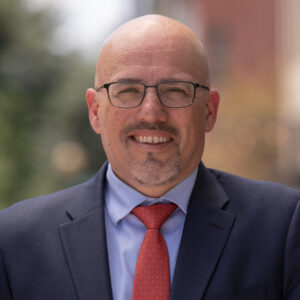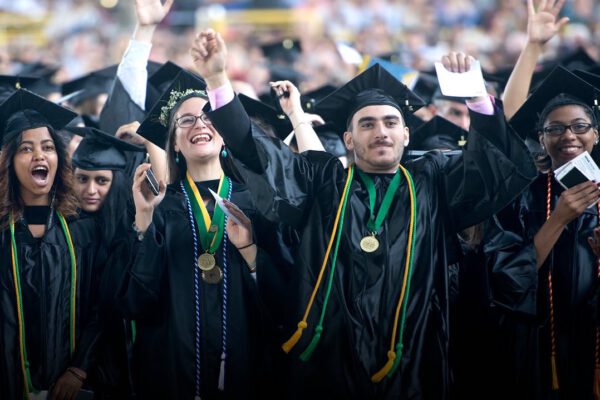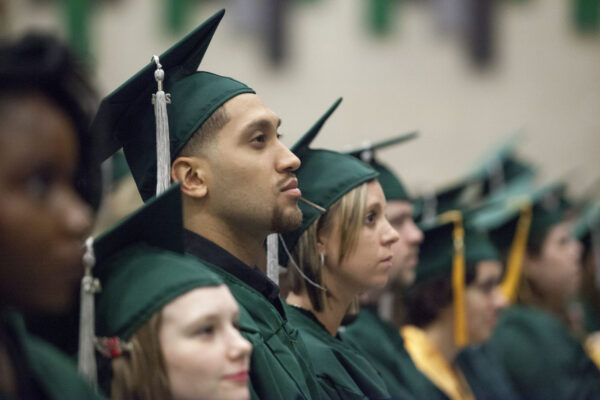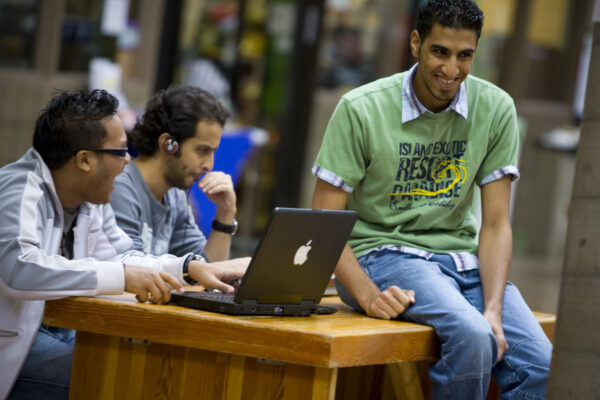By Louis Soares
This post is presented as part of ACE’s Education Blockchain Initiative, which aims to identify ways that blockchain can improve connections between education and employment. Apply by Oct. 30 to be part of the Blockchain Innovation Challenge, designed to explore both the opportunities and the risks of using blockchain in higher education.
Today’s students stop and restart their education, they move across institutions, and they pull together learning from across their studies, work, and life. They do this despite a system that isn’t designed for it—and too often suffer setbacks or hit dead ends as a result. And those impacts aren’t felt evenly, with first-generation, low-income, and Black and Latinx students more likely to be hurt.
However, there’s promising evidence that easier connections across higher education and work—especially innovations that allow learners to completely unbundle education—can improve economic mobility and equity in outcomes. The promise of this unbundling lies in giving learners more control over their path throughout life and creating more flexibility in obtaining and leveraging a variety of credentials. Currently, the data on what a learner knows and is able to do is spread across many organizations. The table below, from a recent U.S. Department of Education report on data interoperability, provides a snapshot of the different silos across education and work that hold this data. [Click to enlarge.]

Given all the diverse organizations and technologies holding learner information, tracking and organizing learning, regardless of where or when it happens in an individual’s life, will undoubtedly require some kind of digital solution to ensure the information is valid, secure, and permanent. Yet, for such a technology to be useful, its value must be clear to the individual learner and other stakeholders who hold or might access the data.
But, as the country’s experience with electronic health records over the past decade has shown, technology often doesn’t live up to its potential if the right incentives aren’t in place—and if the new systems don’t account for human behavior. As Michael Horn, a distinguished fellow at the Clayton Christensen Institute for Disruptive Innovation, recently wrote, electronic health records have failed to revolutionize healthcare in the United States, in part because individual healthcare systems designed their own unique records to communicate within their networks—further calcifying divisions between provider networks rather than reducing them.
Additionally, while individuals were given access to their records, they were not given the personal control that policymakers imagined when they mandated the change. However, a key question is whether people really wanted more control over their records and, by extension, over their care.
This is highly relevant for higher education as we consider how to give learners more control over their records. Will demand for universal learner records materialize? If so, do learners want to contribute to and curate those records, or do they simply want access to them? Who do learners want to give access to their records, and so on?
Blockchain, which is by nature secure and permanent, may be well suited to supporting a skills-based system, providing easy access for individuals and validity and security for employers or education and training programs. And blockchain has increasingly been called on to address many of the shortfalls of electronic health care records around privacy, security, and interoperability.
But to understand the applicability of this technology in education, experiments around blockchain should be designed not just to understand the capabilities of the technology in higher education, but also to ascertain how learners might actually use it.
When Georgia Tech decided to introduce Blockcerts for academic records, for example, an applied research lab on campus ran usability tests for a prototype and conducted interviews to better understand how students might use the application and blockchain technology more broadly. A number of students were attracted to the idea of seamless, mobile access and security, but others dismissed the app or were clear that Blockcerts would only have value if industry recruiters and other colleges were demanding it.
The GreenLight service in Dallas has been hugely successful by using blockchain to connect many of the institutions students are most likely to need to interact with. The service allows the area’s school districts, Dallas County Community College District, and the University of North Texas at Dallas to seamlessly share records, and gives students control over what they can see. This simplifies admissions, enrollment, and other processes—delivering value by making it easier for students to do things they would have done or wanted to do anyway.
The service also allows students who’ve elected to share their information to automatically be screened for scholarships or other opportunities. When the CEO of H-E-B Grocery Stores, for example, announced a $50 million initiative to provide scholarships and other support for future teachers, the Dallas institutions were able to use GreenLight to identify and reach out to students who were now eligible to have their education essentially paid for. Without the shared record system, they might have never known.
The community college district also uses the system to automate reverse transfer, awarding associate degrees to students as soon as they’ve earned the necessary credits at a four-year institution. This provides a meaningful credential for students should they not complete a bachelor’s.
All these functions can meaningfully improve student success, but the key to get learner buy-in has, in many ways, been ease of use and around-the-clock access. Students appreciate that they have immediate access to their records, and can complete an internship application over spring break, when college offices are closed, or at night while racing against a midnight deadline. They appreciate, in other words, that the system is designed with real users in mind—not the ideal, but how actual people behave.
These early experiences provide valuable insight, but we’ve just begun to the scratch the surface of understanding potential user demand for blockchain. Our research on more than 70 initiatives using blockchain in education indicates that digital credentials are vastly underused and misunderstood. We need far more experimentation to understand why.
Any technology, after all, is only useful if people actually use it. So as we work to understand the potential and the limits of universal records, we must do so in the messy but essential context of human behavior. Learners aren’t archetypes or ideal users, but real people with complicated lives and competing demands on their time, energy, and attention. Our solutions should not only aim to improve their lives, but to work with them as they are.
If you have any questions or comments about this blog post, please contact us.



